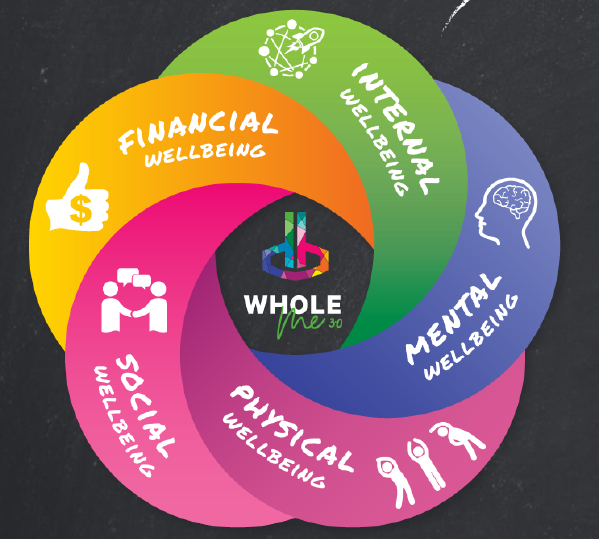By Robert Perry (Manager – Thriving People)
For most Kiwi adults, the majority of our daily life is spent at work. Employers therefore have a unique opportunity to create the conditions for employees to thrive, including employee health and wellbeing.
To support the move to better employee health, more and more businesses are embracing a holistic approach and integrating mental, physical, spiritual, and social health to help people thrive at work, home, and in society.
It was inspiring to hear Peter Crawshaw (OD, Wellbeing and DEI Lead at DB Breweries) speak at a recent Thriving Voices session about DB’s evolutionary approach to build a culture of wellbeing, and the practical steps taken across DB since 2019. In late 2023, this approach was highlighted by HEINEKEN (a global network of 90 000 employees) as a ‘best in class’ standard for employee wellbeing.
WholeMe is DB’s integrated, holistic strategy aimed at improving employee wellbeing. It offers development programs, support services, benefits, and initiatives across five interconnected pillars — spiritual, mental, physical, social, and financial — based on the Te Whare Tapa Whā model.
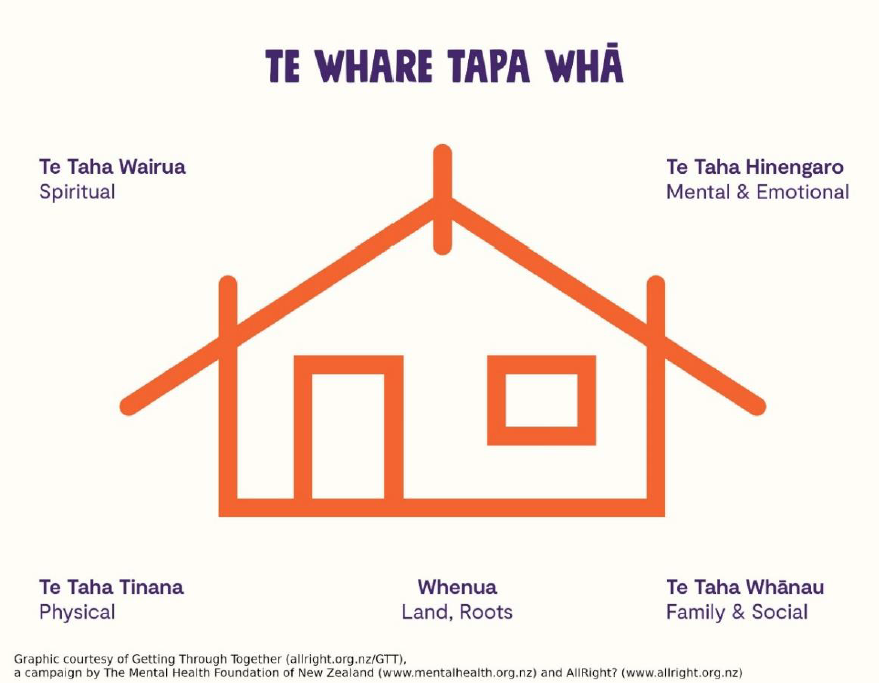
Here are my key takeaways and resources from the session to help you take that critical first or next step at your own organisation.
1. Don’t lose sight of the basics
Peter began our kōrero by highlighting that wellbeing is dynamic, subjective, and holistic, operating on a continuum influenced by various workplace and personal factors. It holds different meanings for each person, and everyone is at different stages of their wellbeing journey – meaning there is no ‘one size fits all’ approach.
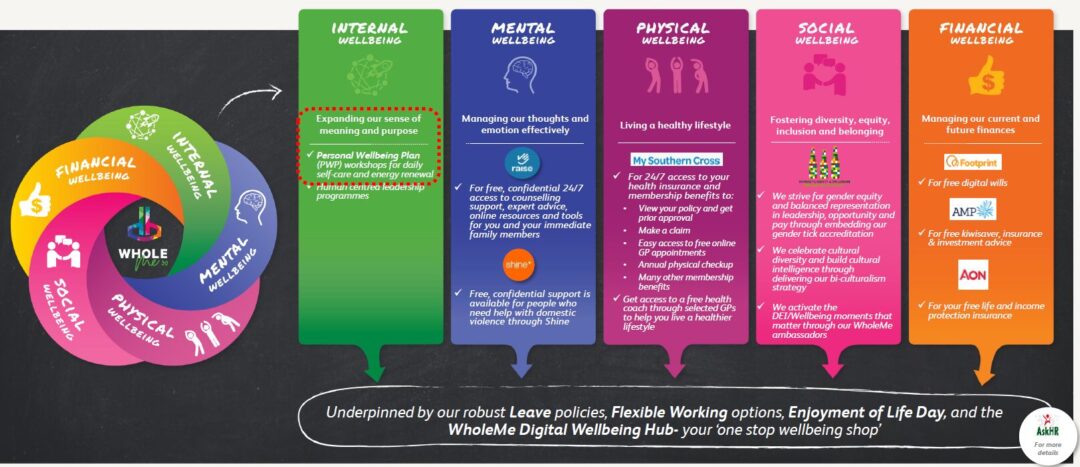
For more information about the fundamentals of wellbeing, watch our previous Thriving Voices session with DLA Piper and Business Leaders’ Health and Safety Forum here.
2. Alignment with organisation values and purpose is foundational
A key feature of DB’s commitment and approach to the wellbeing of its people is that it’s driven out of its purpose, guided by DB’s values of caring for people and planet, and enjoyment for life and its behaviours. So, wellbeing lies at the heart of DB’s why, what, and how.
By adopting a holistic wellness culture, organisations can create an environment where employees can thrive both personally and professionally, leading to a more engaged, productive, and resilient workforce. Check out some of the outcomes of DB’s mahi below.
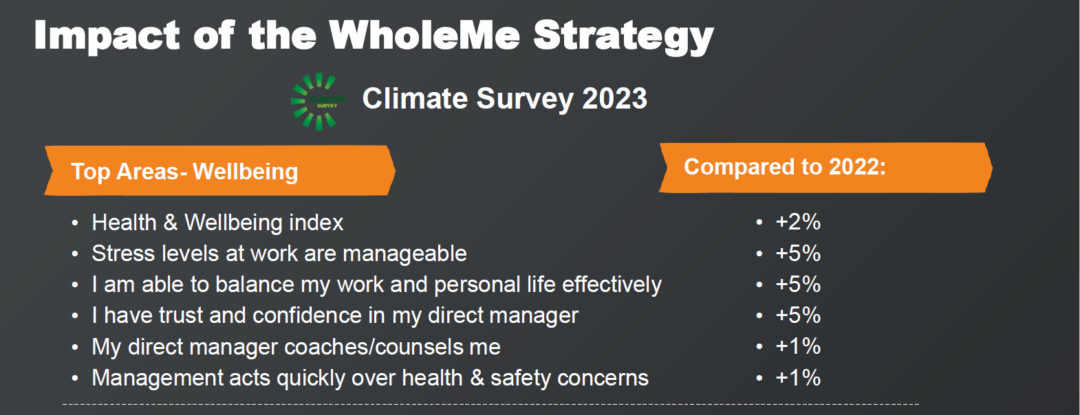
3. Australian regulation puts psychosocial risks in the spotlight
The design and management of work are fundamental considerations for creating mentally healthy workplaces, and a major challenge for occupational health and safety.
Psychosocial risks are aspects of the workplace that can cause psychological or physical harm to employees. Common sources of psychosocial risk for workers include heavy workloads, bullying, uncomfortable working spaces, and a lack of equipment or poor technology.
While the term ‘psychosocial’ is not explicitly referred to in NZ legislation, it is an area of growing focus for NZ Worksafe and business leaders, particularly considering the new regulations in Australia which have introduced new responsibilities on business for identifying and managing psychosocial risks. So knowing the psychosocial factors is a great first step in fostering a mentally healthy workplace.
4. Importance of putting on your own oxygen mask first
I was reflecting on the theme for this year’s Mental Health Awareness Week: ‘Community is… what we create together’. The theme sought to encourage people to reflect on the power of community and how it can be defined, built, and celebrated.
Peter brought this concept to life for me, by reflecting on his own wellbeing journey, highlighting the importance of ‘putting your own oxygen mask first’ when building a community of wellbeing. He guided the group through a ‘step by step’ process (covering the ‘how, what and why’) to build a Personal Wellbeing Plan (PWP) using the WholeMe framework.
The plan sets out a series micro actions aimed at achieving specific goals across the seven dimensions of wellness to help people reach the goal of ‘thriving’, as well as how you will be kept accountable for those actions. At DB, the vision is that all employees have a PWP, which outlines specific actions for self-care and energy renewal, especially during challenging and stressful times, which Peter referred to as the ‘pit’.
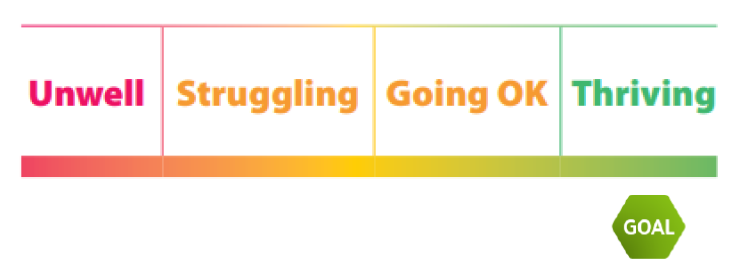
Each step is supported by a templated self-assessment, based around three tips for getting out of the pit:
- Prioritising self care by identifying and making time for the things that recharges your batteries.
- Finding your flow by identifying activities that truly matter to you that make you feel alive, and identify ‘micro actions’ to improve consistency and alignment to those priorities – embrace these moments and makes space for them in your schedule.
- Setting boundaries and saying no when your energy reserves are low. Protecting time and focusing on what truly matters.
5. The business case for wellbeing is proven
A recent McKinsey report states that wellbeing is now one of the most foundational skills for our leaders, so they can bring their best selves to work and for their own people. If you want to get a sense of the value proposition, McKinsey cited research by MHI and Business in the Community showed that the UK economic value of improved employee well-being could be between £130 billion to £370 billion per year. That’s 6 to 17 percent of the UK’s GDP and the equivalent of NZD$9,000-26,000 per UK employee.
A call to action
A huge thank you to Peter (and DB) for generously sharing these resources and taking the group through a condensed workshop which has been rolled out to over 140 internal employees and across some of the operating companies within the Heineken global network.
SBC members employ a collective workforce over 275,000 employees. Can you imagine the positive social impact the business community can have across the motu if each of those workers had their own personal wellbeing plan?
Okay, I’m off to prepare mine….who’s joining me?

